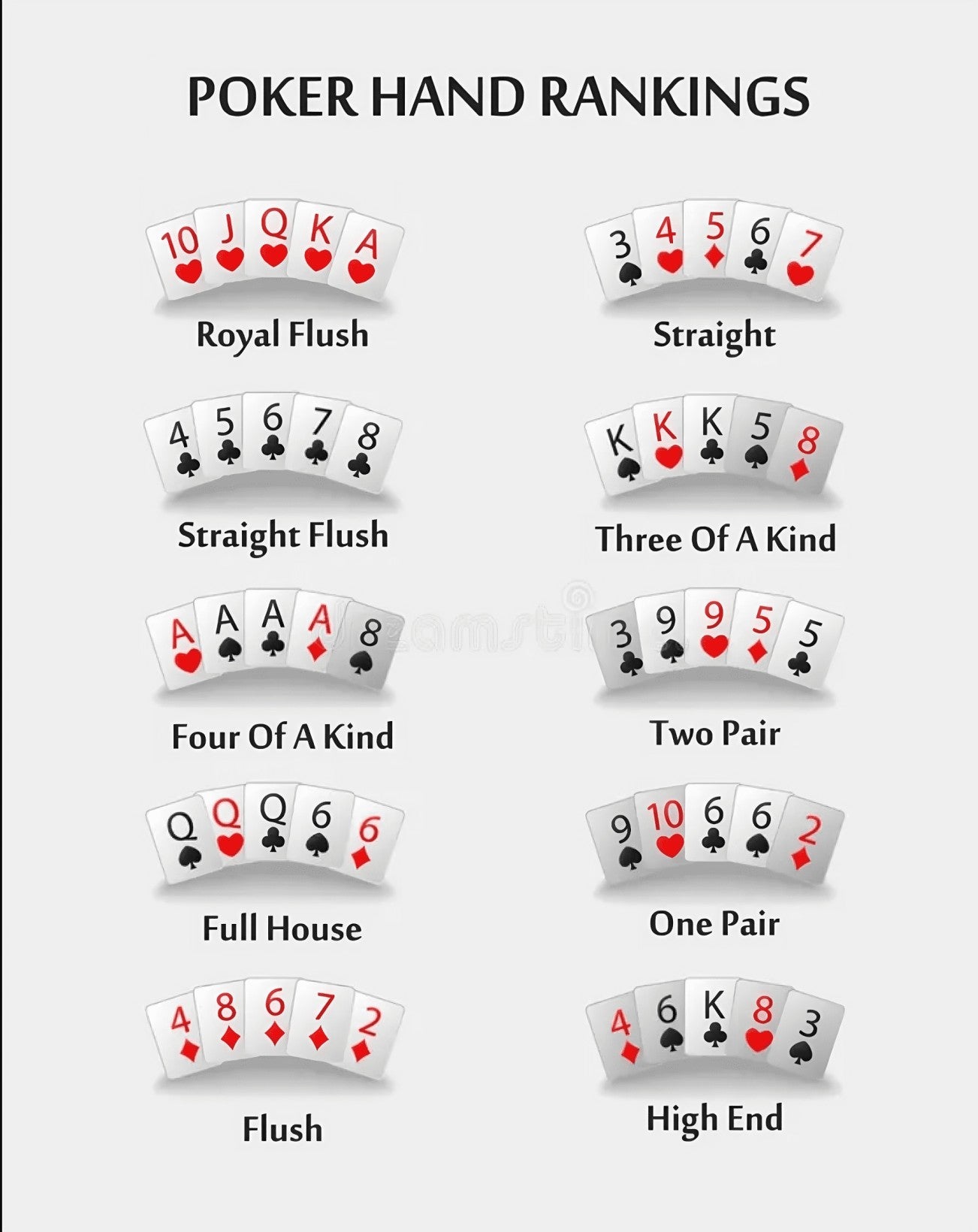I. Introduction
Poker, often hailed as a game of skill, strategy, and nerve, embodies a unique blend of psychology, probability, and intuition. Its allure lies not only in the thrill of competition but also in the intricate layers of decision-making that unfold with each hand dealt. From the dizzying array of possible hands to the strategic maneuvers at play, poker presents a complex tapestry that can bewilder even the most seasoned players.
For beginners stepping into the world of poker, this complexity can feel overwhelming. The sheer volume of rules, terminology, and strategies can seem like an insurmountable mountain to climb. However, amid this complexity lies a beacon of guidance: the poker cheat sheet.
In this blog, we'll delve into the importance of having a poker cheat sheet for beginners as a tool to navigate the labyrinthine world of poker. From understanding the fundamental hierarchy of poker hands to mastering the intricacies of Texas Hold'em strategy, we'll provide a comprehensive overview to equip you with the knowledge and confidence to thrive at the poker table. So, whether you're a novice looking to dip your toes into the game or an enthusiast seeking to sharpen your skills, join us on this journey as we unravel the mysteries of poker mastery.
II. Understanding Poker Hands
A. Explanation of the ranking hierarchy of poker hands
In poker, hands are the combinations of cards that players hold, and they determine who wins the game. Here's a simple explanation of the different types of poker hands, listed from the best to the least valuable:
-
Royal Flush: This is the best hand you can get. It's when you have a 10, Jack, Queen, King, and Ace all of the same suit. It's super rare and very powerful.
-
Straight Flush: A straight flush is when you have five cards in a row, all of the same suit. For example, 2, 3, 4, 5, and 6 of hearts.
-
Four of a Kind: This is when you have four cards of the same rank, like four Kings or four 7s.
-
Full House: A full house is when you have three cards of one rank and two cards of another rank. For instance, three Queens and two 4s.
-
Flush: A flush is when you have five cards of the same suit, but they don't have to be in order. For example, five hearts of any rank.
-
Straight: A straight is when you have five cards in a row, but they can be of different suits. For example, 4 of hearts, 5 of clubs, 6 of diamonds, 7 of spades, and 8 of hearts.
-
Three of a Kind: This is when you have three cards of the same rank, like three Jacks or three 6s.
-
Two Pair: Two pairs are when you have two sets of cards of the same rank. For example, two 10s and two 7s.
-
One Pair: One pair is when you have two cards of the same rank. For instance, two Aces or two 5s.
-
High Card: If nobody has any of the above hands, the player with the highest card wins. If two players have the same high card, the next highest card is used to break the tie, and so on.
B. Visual Representation: Printable Poker Hands Chart
Here's a simple and easy-to-use printable poker hands chart to help you understand the ranking hierarchy of poker hands:
-
Royal Flush: Ace, King, Queen, Jack, and Ten of the same suit.
-
Straight Flush: Five consecutive cards of the same suit.
-
Four of a Kind: Four cards of the same rank.
-
Full House: Three cards of one rank and two cards of another rank.
-
Flush: Five cards of the same suit, not in sequence.
-
Straight: Five consecutive cards of any suit.
-
Three of a Kind: Three cards of the same rank.
-
Two Pair: Two cards of one rank and two cards of another rank.
-
One Pair: Two cards of the same rank.
-
High Card: When no other poker hand is formed, the highest card in the hand is considered.
Feel free to print out this chart and keep it handy as a reference while playing poker.
III. Texas Hold'em Cheat Sheet
A. Overview of Texas Hold'em as the Most Popular Variant
- Brief explanation of Texas Hold'em rules and gameplay.
- Mention of its popularity in both live and online poker settings.
- Highlighting its simplicity and strategic depth, making it appealing to players of all skill levels.
B. Pre-flop Strategy
-
Starting Hand Selection
- Explanation of the concept of starting hands and their importance.
- Introduction to hand categories (premium, playable, marginal, and junk hands).
- Discussion on the types of hands to play based on position and table dynamics.
-
Positional Considerations
- Overview of the significance of position in poker.
- Explanation of early, middle, and late positions and their implications on hand selection.
- Tips on adjusting starting hand ranges according to position.
C. Post-flop Strategy
-
Understanding Pot Odds and Implied Odds
- Definition of pot odds and implied odds.
- Explanation of how to calculate pot odds and implied odds.
- Illustration of how these concepts influence decision-making in post-flop situations.
-
Deciding When to Bet, Call, Raise, or Fold
- Guidelines on assessing the strength of your hand relative to the board.
- Discussion on factors influencing betting decisions, such as opponent tendencies and board texture.
- Tips on adjusting bet sizing based on the situation and goals.
D. Key Poker Terminology and Their Meanings
- Introduction to essential poker terminology commonly used in Texas Hold'em.
- Definitions of terms such as blinds, flop, turn, river, check, raise, fold, etc.
- Explanation of how understanding these terms enhances communication and comprehension at the poker table.
IV. How to Use a Poker Cheat Sheet Effectively
Poker cheat sheets can be invaluable tools for both beginners and seasoned players alike. Here are some tips on how to make the most out of your cheat sheet during gameplay:
A. Tips for beginners on utilizing a cheat sheet during gameplay:
- Familiarize yourself with the hand rankings: Before diving into a game, ensure you understand the hierarchy of poker hands outlined on your cheat sheet.
- Keep your cheat sheet nearby: Whether it's printed out or on your device, have your cheat sheet readily accessible during gameplay for quick reference.
- Use it as a learning aid: Take the opportunity to study the cheat sheet during downtime in the game to reinforce your understanding of key concepts.
B. Importance of practice and experience in internalizing strategies:
- Practice, practice, practice: While a cheat sheet can provide guidance, true mastery comes through repeated play and experience.
- Analyze your gameplay: After each session, reflect on how you utilized your cheat sheet and identify areas for improvement.
- Adapt to different situations: As you gain experience, you'll learn when to deviate from the recommendations on your cheat sheet based on table dynamics and player tendencies.
C. Incorporating the cheat sheet into your learning process:
- Start with the basics: Focus on mastering the fundamental strategies outlined on your cheat sheet before delving into more advanced concepts.
- Gradually reduce reliance: As your understanding of the game deepens, aim to rely less on the cheat sheet and more on your own knowledge and intuition.
- Use it as a reference tool: Even as you become more proficient, keep your cheat sheet handy for occasional reference during challenging situations or to reinforce your memory.





